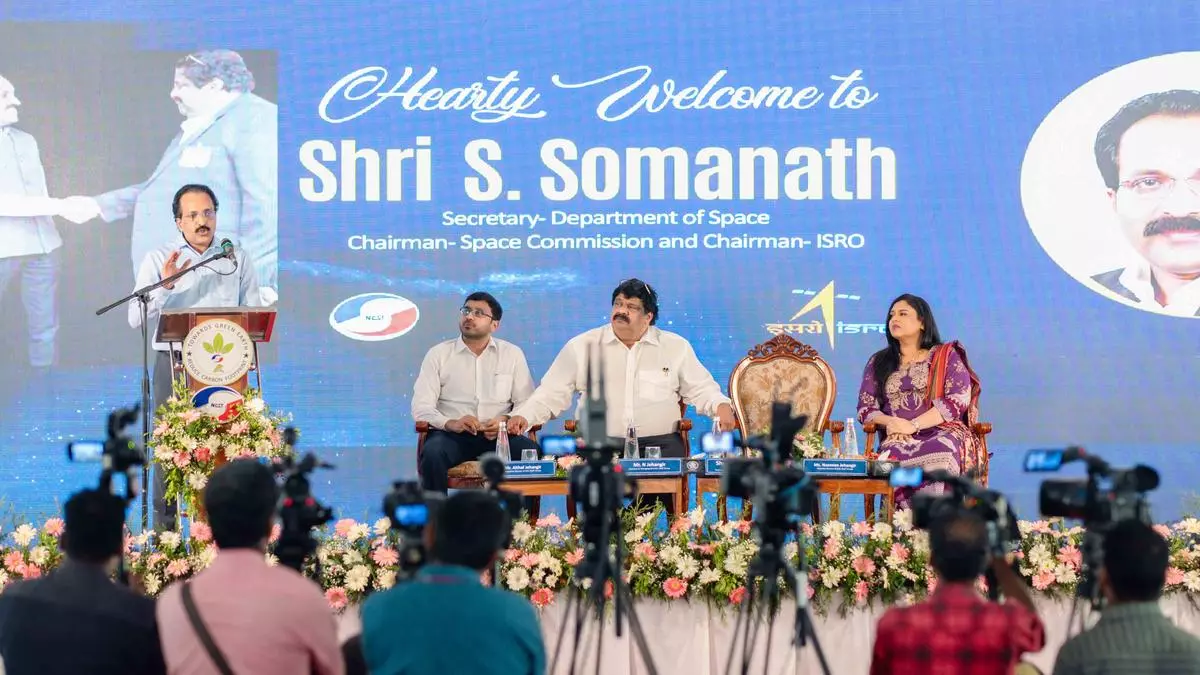Morpho butterflies are famous for their stunningly beautiful, blue wings. If you are able to catch one, just check out their wings; you’ll find that the wings have no pigmentation. They are just multiple layers of scales arranged in a way that they reflect only the blue light.
Scientists at the Fraunhofer Institute in Germany drew inspiration from these Morpho butterflies and have developed a special coating for solar panels. They have branded it, appropriately, as MorphoColor. Give a coat of this on ‘building integrated photovoltaics’ (BIPV) — the panels that meld unobtrusively into windows and also generate electricity. BIPVs have been around for some time — but without takers, because they don’t look pretty. But with MorphoColor coated panels they can be of any chosen colour — so they can potentially enhance, rather than depress, aesthetics.
Materials such as MorphoColor are among those that can be called as the ‘superheroes of building materials.’ These new class of materials are emerging to gladden the hearts of green building enthusiasts. We are talking of greener replacements for cement (including for green cement) and super insulation materials (SIM). They are not yet market-ready, due to their high costs, but efforts are on to make them market-ready, given their importance in reducing greenhouse gas emissions from the construction sector, which is a big emitter. To illustrate, the total electricity demand in India in 2021-22 was 1,296 billion units; a third of it (334 BU) was due to the building sector. According to the Ministry of Power, this is set to increase further to 761 BU by 2031. A big chunk of this demand comes from room air conditioners. So, how to keep our rooms cool while reducing the air conditioning load? Here is where the superheroes of building materials come in.
Greener cement
Cement production emits a lot of greenhouse gases. Globally, around 4.4 billion tonnes of cement is produced, which accounts for about 8 per cent of GHG emissions. The movement towards replacing cement with other cementitious materials (fly ash, blast furnace slag and silica fume) in concrete has taken root.
But there are other materials cooking in the crucible of technology. One is ‘photocatalytic materials’. Aamar Danish et al, in their paper, say that photocatalytic materials “have the ability to absorb light, generating electron-hole pairs that facilitate chemical transformations of contaminants such as oxides and organic pollutants, converting the contaminants into greener products.
Another way of making concrete is with the addition of materials with CO2 capturing ability (like zeolite) and recycled aggregates. Then, there are efforts in using natural fibres — such as basalt, coconut, banana, sugarcane bagasse, hemp, kenaf, bamboo, jute, sisal, abaca and cotton, and even human hair — for ‘fibre-reinforced concrete’. A very interesting paper on the subject by a group of Indian and Emirati researchers, discusses the merits and demerits of each of these in detail and notes that “natural fibres exhibit excellent resistance to corrosion and fatigue and are biodegradable, non-toxic, readily available, non-abrasive, lightweight, inexpensive, and possess strong specific strength.”
‘Natural fibre composites’ for concrete making is a promising area, but requires further research to understand the full contours of the material. The authors of the paper note that research is particularly needed to investigate hybridising fibres for optimal properties.
Aerogels and VIPS
Among the best super insulation materials are aerogels and vacuum insulation panels (VIP). These are used in the packing industry and in refrigerated trucks, but researchers are wondering why not bring them into construction. (Well, their cost is a problem.) Aerogels are fascinating materials. A gel is a gooey mixture of solid and liquid—a lot more liquid than solid. An aerogel is a material in which the liquid in a gel has been removed, leaving only the solid. This must be done carefully or else the material will crumble. The sol-gel process is the predominant method of making aerosols.
Aerosols are incredibly light. An aerosol developed by the Lawrence Livermore National Research Lab in the United States is said to be the world’s lightest material — a cubic cm of it weighs 0.003 grams. Theoretically aerogels can be made with any material, including metals, but the most typical aerogel is the one made with silicon dioxide. Aerogels are great super insulation materials. You can give a lining of an aerogel, say, silica aerogel, over a concrete wall for excellent insulation.
Likewise, VIPs are increasingly finding mention in construction narrative. VIPs consist of a core material enclosed within a gas-tight envelope from which air has been evacuated, resulting in a near-vacuum environment. This design minimizes heat transfer through conduction and convection, making VIPs highly effective thermal insulation materials. VIPs are used in walls, roofs, and floors to provide high levels of insulation while minimizing thickness. This is particularly useful in retrofitting existing buildings where space constraints may limit the thickness of insulation that can be added.
So, from MorphoColor to VIPs there are exciting green building materials that show a lot of promise. Notably, many of these offer entrepreneurial opportunities. A whole new industry is rising.




